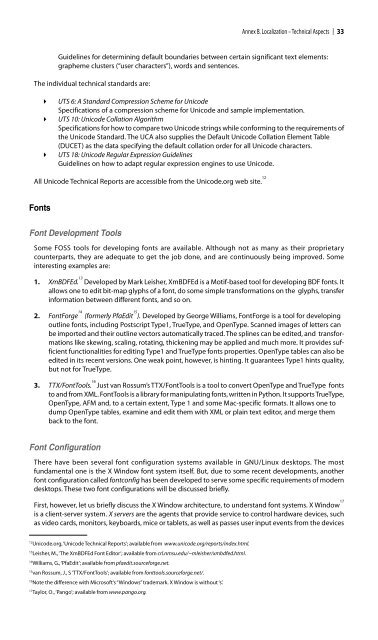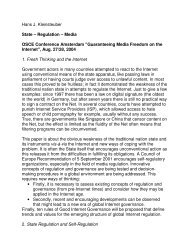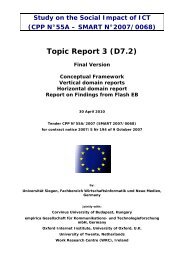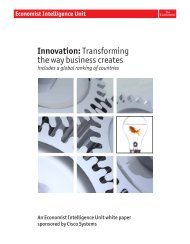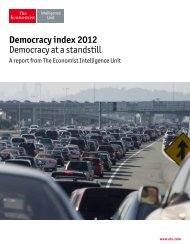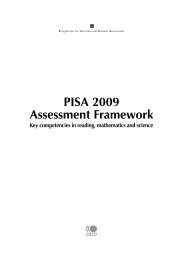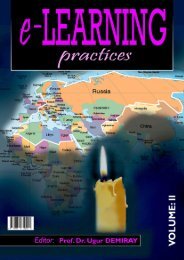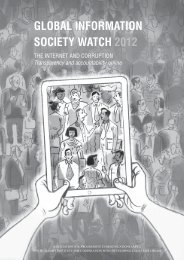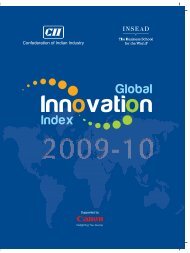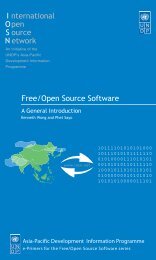Annex B. Localization – Technical Aspects ❘ 33Guidelines for determining default boundaries between certain significant text elements:grapheme clusters (“user characters”), words and sentences.The individual technical standards are:UTS 6: A Standard Compression Scheme for UnicodeSpecifications of a compression scheme for Unicode and sample implementation.UTS 10: Unicode Collation AlgorithmSpecifications for how to compare two Unicode strings while conforming to the requirements ofthe Unicode Standard. The UCA also supplies the Default Unicode Collation Element Table(DUCET) as the data specifying the default collation order for all Unicode characters.UTS 18: Unicode Regular Expression GuidelinesGuidelines on how to adapt regular expression engines to use Unicode.All Unicode Technical Reports are accessible from the Unicode.org web site. 12FontsFont Development ToolsSome FOSS tools for developing fonts are available. Although not as many as their proprietarycounterparts, they are adequate to get the job done, and are continuously being improved. Someinteresting examples are:1. XmBDFEd. 13 Developed by Mark Leisher, XmBDFEd is a Motif-based tool for developing BDF fonts. Itallows one to edit bit-map glyphs of a font, do some simple transformations on the glyphs, transferinformation between different fonts, and so on.2. FontForge 14 (formerly PfaEdit 15 ). Developed by George Williams, FontForge is a tool for developingoutline fonts, including Postscript Type1, TrueType, and OpenType. Scanned images of letters canbe imported and their outline vectors automatically traced. The splines can be edited, and transformationslike skewing, scaling, rotating, thickening may be applied and much more. It provides sufficientfunctionalities for editing Type1 and TrueType fonts properties. OpenType tables can also beedited in its recent versions. One weak point, however, is hinting. It guarantees Type1 hints quality,but not for TrueType.3. TTX/FontTools. 16 Just van Rossum’s TTX/FontTools is a tool to convert OpenType and TrueType fontsto and from XML. FontTools is a library for manipulating fonts, written in Python. It supports TrueType,OpenType, AFM and, to a certain extent, Type 1 and some Mac-specific formats. It allows one todump OpenType tables, examine and edit them with XML or plain text editor, and merge themback to the font.Font ConfigurationThere have been several font configuration systems available in GNU/Linux desktops. The mostfundamental one is the X Window font system itself. But, due to some recent developments, anotherfont configuration called fontconfig has been developed to serve some specific requirements of moderndesktops. These two font configurations will be discussed briefly.First, however, let us briefly discuss the X Window architecture, to understand font systems. X Window 17is a client-server system. X servers are the agents that provide service to control hardware devices, suchas video cards, monitors, keyboards, mice or tablets, as well as passes user input events from the devices12Unicode.org, ‘Unicode Technical Reports’; available from www.unicode.org/reports/index.html.13Leisher, M., ‘The XmBDFEd Font Editor‘; available from crl.nmsu.edu/~mleisher/xmbdfed.html.14Williams, G., ‘PfaEdit’; available from pfaedit.sourceforge.net.15van Rossum, J., S ‘TTX/FontTools’; available from fonttools.sourceforge.net/.16Note the difference with Microsoft’s “Windows” trademark. X Window is without ‘s’.17Taylor, O., ‘Pango’; available from www.pango.org.
34 ❘ FREE/OPEN SOURCE SOFTWARE: LOCALIZATIONto the clients. X clients are GUI application programs that request X server to draw graphical objects onthe screen, and accept user inputs via the events fed by X server. Note that with this architecture, X clientand server can be on different machines in the network. In which case, X server is the machine that theuser operates with, while X client can be a process running on the same machine or on a remote machinein the network.In this client-server architecture, fonts are provided on the server side. Thus, installing fonts meansconfiguring X server by installing fonts and registering them to its font path.However, since X server is sometimes used to provide thin-client access in some deployments, where Xserver may run on cheap PCs booted by floppy or across network, or even from ROM, font installation oneach X server is not always appropriate. Thus, font service has been delegated to a separate servicecalled X Font Server (XFS). Another machine in the network can be dedicated for font service so that all Xservers can request font information. Therefore, with this structure, an X server may be configured tomanage fonts by itself or to use fonts from the font server, or both.Nevertheless, recent changes in XFree86 have addressed some requirements to manage fonts at theclient side. The Xft extension provides anti-aliased glyph images by font information provided by the Xclient. With this, the Xft extension also provides font management functionality to X clients in its firstversion. This was later split from Xft2 into a separate library called fontconfig. fontconfig is a fontmanagement system independent of X, which means it can also apply to non-GUI applications such asprinting services. Modern desktops, including KDE 3 and GNOME 2 have adopted fontconfig as their fontmanagement systems, and have benefited from closer integration in providing easy font installationprocess. Moreover, client-side fonts also allow applications to do all glyph manipulations, such as makingspecial effects, while enjoying consistent appearance on the screen and in printed outputs.The splitting of the X client-server architecture is not standard practice on stand-alone desktops. However,it is important to always keep the split in mind, to enable particular features.Output MethodsSince the usefulness of XOM is still being questioned, we shall discuss only the output methods alreadyimplemented in the two major toolkits: Pango of GTK+ 2 and Qt 3.Pango Text Layout EnginesPango [‘Pan’ means ‘all’ in English and ‘go’ means ‘language’ in Japanese] 18is a multilingual text layoutengine designed for quality text typesetting. Although it is the text drawing engine of GTK+, it can alsobe used outside GTK+ for other purposes, such as printing. 19 This section will provide localizers with abird‘s eye view of Pango. The Pango reference manual 20 should be consulted for more detail.PangoLayoutAt a high level, Pango provides the PangoLayout class that takes care of typesetting text in a column ofgiven width, as well as other information necessary for editing, such as cursor positions. Its features maybe summarized as follows:Paragraph PropertiesindentspacingalignmentText Elementsget lines and their extentsget runs and their extentscharacter search at (x, y) positionjustificationword/character wrapping modestabscharacter logical attributes (is line break, is cursor position, etc.)cursor movements18Taylor, O., ‘Pango – Design’; available from www.pango.org/design.shtml.19GNOME Development Site, ‘Pango Reference Manual’; available from developer.gnome.org/doc/API/2.0/pango/.20This is a very rough classification. Obviously, there are further steps, such as line breaking, alignment and justification. They need notbe discussed here, as they go beyond localization.


